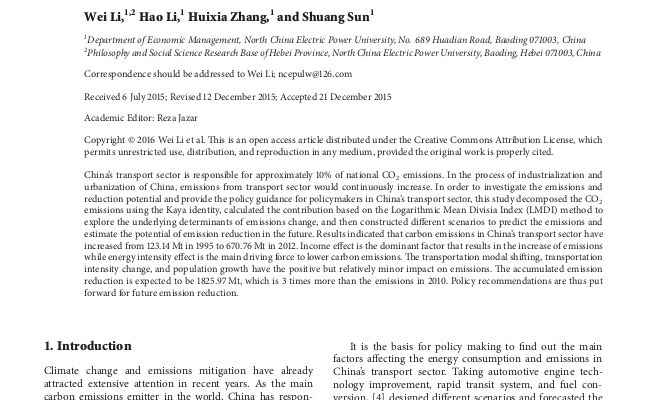The Analysis of CO2 Emissions and Reduction Potential in China’s Transport Sector
The Analysis of CO2 Emissions and Reduction Potential in China’s Transport Sector/ Wei Li, Hao Li, Huixia Zhang, and Shuang Sun. – Mathematical Problems in Engineering, Volume 2016, Article ID 1043717, 12 pages [PDF, 2,6 MB]. Open Access.
China’s transport sector is responsible for approximately 10% of national CO2 emissions. In the process of industrialization and urbanization of China, emissions from transport sector would continuously increase. In order to investigate the emissions and reduction potential and provide the policy guidance for policymakers in China’s transport sector, this study decomposed the CO2 emissions using the Kaya identity, calculated the contribution based on the Logarithmic Mean Divisia Index (LMDI) method to explore the underlying determinants of emissions change, and then constructed different scenarios to predict the emissions and estimate the potential of emission reduction in the future. Results indicated that carbon emissions in China’s transport sector have increased from 123.14 Mt in 1995 to 670.76 Mt in 2012. Income effect is the dominant factor that results in the increase of emissions while energy intensity effect is the main driving force to lower carbon emissions. The transportation modal shifting, transportation intensity change, and population growth have the positive but relatively minor impact on emissions. The accumulated emission reduction is expected to be 1825.97 Mt, which is 3 times more than the emissions in 2010. Policy recommendations are thus put forward for future emission reduction.
